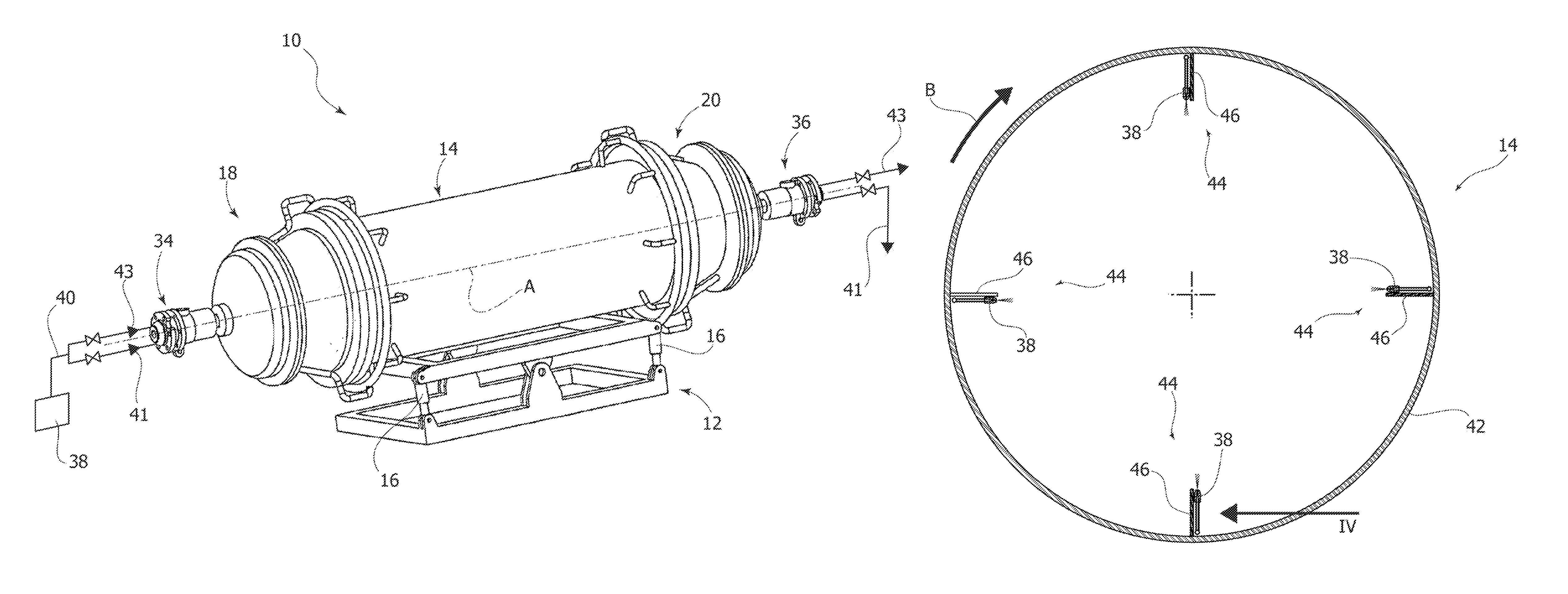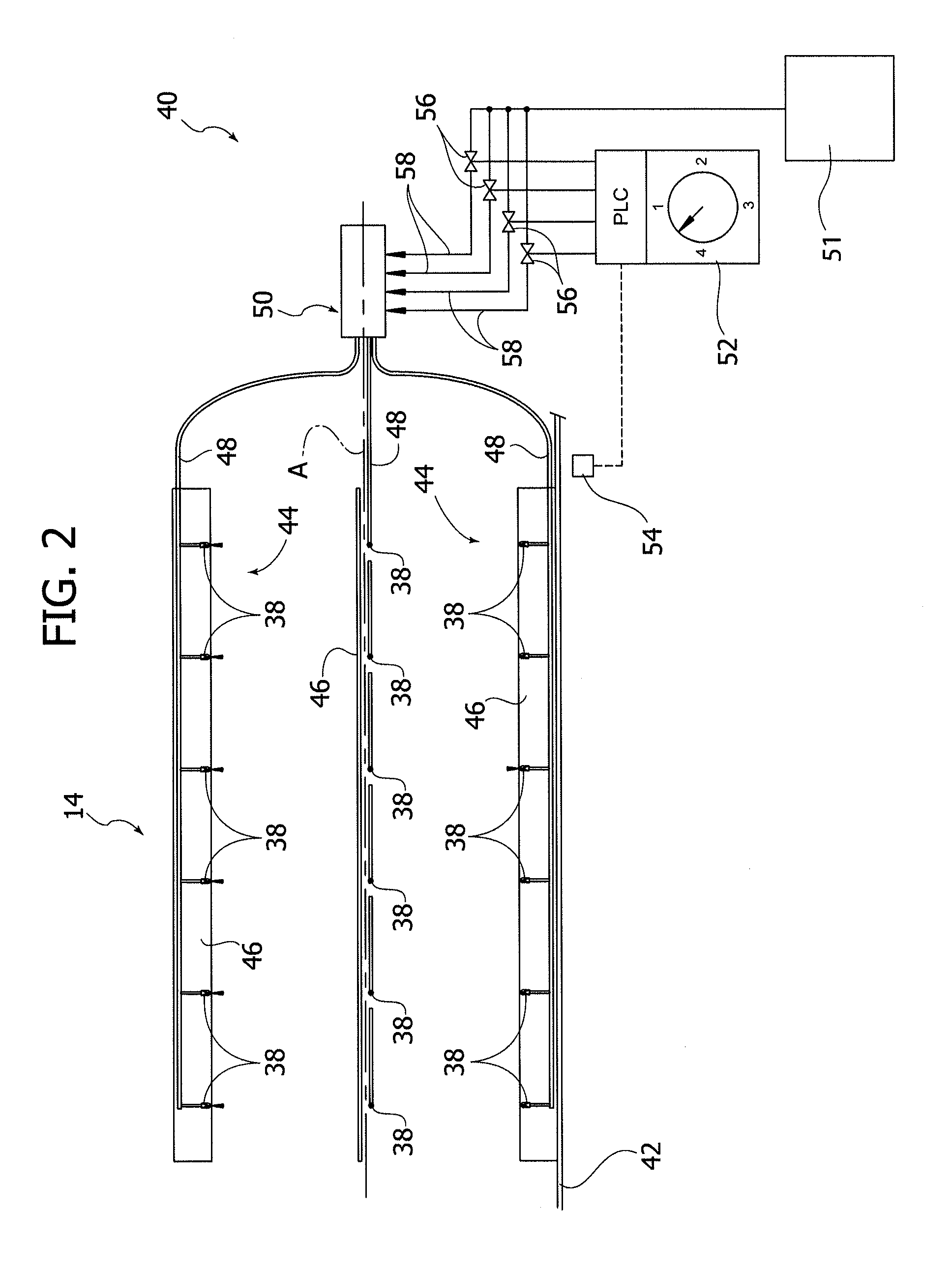Apparatus and process for recycling absorbent sanitary products
a technology of absorbent sanitary products and apparatus, which is applied in the field of apparatus and process for recycling absorbent sanitary products, can solve the problems of high energy expenditure, problematical disposal, and insatiable current treatment techniques of used absorbent sanitary products, and achieves the effects of washing, and reducing the cost of cellulose drying
- Summary
- Abstract
- Description
- Claims
- Application Information
AI Technical Summary
Problems solved by technology
Method used
Image
Examples
Embodiment Construction
[0028]With reference to FIG. 1, designated by 10 is a rotary-autoclave apparatus for treating used absorbent sanitary products. The apparatus 10 comprises a stationary structure 12, which carries a cylindrical autoclave 14 that turns about its longitudinal axis A. The apparatus 10 comprises a driving device (not illustrated), which drives the autoclave 14 in rotation about the axis A. The supporting structure 12 may be provided with actuators 16 for varying the inclination of the autoclave 14 with respect to a horizontal axis, which enables tilting of the autoclave 14 between a loading / unloading position and a working position. The autoclave 14 has two ends, at least one of which terminates in a hatch that can be opened to enable access to the internal space of the autoclave and sealably closed to enable pressurization of the internal space. In the example illustrated two openable hatches 18, 20 are provided, which can be used, for example, for loading the autoclave with the product...
PUM
| Property | Measurement | Unit |
|---|---|---|
| temperature | aaaaa | aaaaa |
| pressure | aaaaa | aaaaa |
| size | aaaaa | aaaaa |
Abstract
Description
Claims
Application Information
 Login to View More
Login to View More - R&D
- Intellectual Property
- Life Sciences
- Materials
- Tech Scout
- Unparalleled Data Quality
- Higher Quality Content
- 60% Fewer Hallucinations
Browse by: Latest US Patents, China's latest patents, Technical Efficacy Thesaurus, Application Domain, Technology Topic, Popular Technical Reports.
© 2025 PatSnap. All rights reserved.Legal|Privacy policy|Modern Slavery Act Transparency Statement|Sitemap|About US| Contact US: help@patsnap.com



